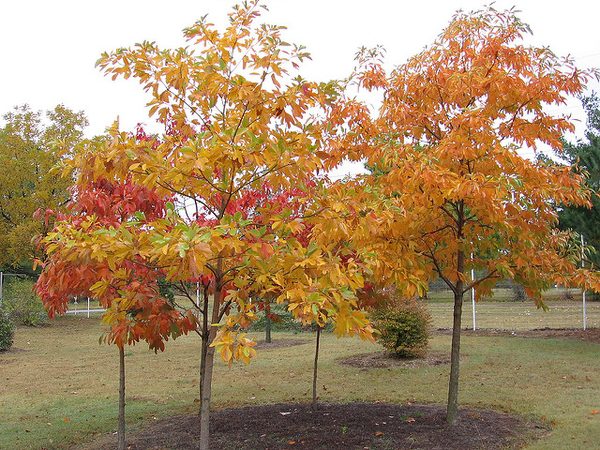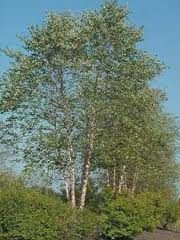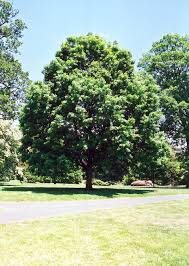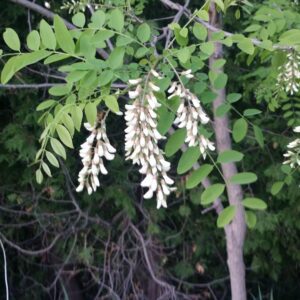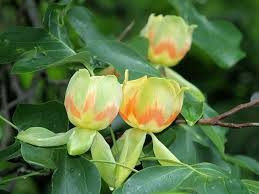Sassafras albidum, Sassafras, 12-18″ Wholesale Native Bare Root Tree (SPRING SHIP ONLY)
$1.75
Out of stock
Sassafras albidum, Sassafras, 12-18″ Wholesale Native Bare Root Tree
An order minimum of 25 of this size/species is required.
Wholesale Pricing is based on Quantity
25 or more $1.75 each
50 or more $1.60 each
For Shipping, Install and additional info please see “About Bare Root“.
Native bare Root Trees are cut and shipped while dormant, late November to early spring.
See all available Bare Root Trees
Order Minimum
There is a minimum order total of $150.00.
before tax (VA residents only) and shipping.
There are NO EXCEPTIONS.
Description
Sassafras albidum, Sassafras, 12-18″ Wholesale Native Bare Root Tree
For Shipping, Install and additional info please see “About Bare Root“.
Native bare Root Trees are cut and shipped while dormant, late November to early spring.
See all available Bare Root Trees
Common sassafras is an aromatic deciduous flowering tree that is found in all areas of North Carolina except the higher mountains. In early to mid-spring, small, bright yellow-green flower clusters are borne in 2-inch stalks on separate male and female trees. Female trees produce a blue, fleshy drupe that is borne in a red cup attached to a red stalk. In the fall, the leaves turn a beautiful yellow to orange to red. The tree is a member of the Lauraceae or laurel family.
The common sassafras is native to southwestern Maine to central Michigan, southeastern Iowa to eastern Texas, and east and central Florida. They can be found in woodlands, abandoned fields, groves, and along fences and roadsides.
The genus name, Sassafras, is most likely an adaption from a Native American name. The epithet, albidum, means “whitish,” and references the undersides of the tree’s leaves.
This tree prefers well-drained sandy, acidic soils but will adapt to other soils if well-drained. It will grow in sun to partial shade and is drought tolerant once established.
This tree produces flowers early in the spring and develops uniquely shaped leaves. The leaves are bright green and either ovate or spoon-shaped, mitten-shaped, or three-lobed or fork-shaped. The underside of the leaf is paler or white. The fall foliage of orange, red and yellow had an interest in the landscape. All parts of the common sassafras are aromatic. If the young bark is scratched, it releases a spicy scent.
The common sassafras may be used in naturalized areas or provide a screen in large areas by allowing the suckers to spread or colonize. The tree may also be used as a shade tree, street tree, or specimen.
Uses (Ethnobotany):
Many Native American peoples have historically used the oils in tonics for medical purposes. Leaves and oils have been used in food products, soaps, and fragrances. The wood is used to make furniture and boats.
Life Cycle:
Woody
Recommended Propagation Strategy:
Root Cutting
Seed
Stem Cutting
Country Or Region Of Origin:
Eastern North America
Distribution:
AL , AR , CT , DC , DE , FL , GA , IA , IL , IN , KS , KY , LA , MA , MD , ME , MI , MO , MS , NC , NH , NJ , NY , OH , OK , PA , RI , SC , TN , TX , VA , VT , WI , WV
Fire Risk Rating:
medium flammability
Wildlife Value:
Fruits are eaten by eastern bluebirds, red-eyed vireos, quail, wild turkeys, kingbirds, crested flycatchers, mockingbirds, sapsuckers, pileated woodpeckers, yellowthroat warblers and phoebes, black bears, beaver, rabbits, squirrels, some eat bark and wood, white-tailed deer browse twigs and foliage. This plant supports Imperial Moth (Eacles imperialis) larvae which have one brood per season and appear from April-October in the south. Adult Imperial Moths do not feed. This plant also supports Spicebush Swallowtail (Papilio troilus) larvae which have 2 generations per year from April-October. Adult Spicebush Swallowtail butterflies feed on nectar from Japanese honeysuckle, jewelweed, thistles, milkweed, azalea, dogbane, lantana, mimosa, and sweet pepperbush.
Play Value:
Attracts Pollinators
Fragrance
Wildlife Food Source
Wildlife Larval Host
Particularly Resistant To (Insects/Diseases/Other Problems):
Heat, drought, and soil compaction tolerant.
Edibility:
Teas and drinks are made from the roots. Root beer use to be flavored from the bark of the roots of the sassafras The leaves are dried and ground to make filé powder, a common thickening ingredient in gumbo.
Dimensions:
Height: 30 ft. 0 in. – 60 ft. 0 in.
Width: 25 ft. 0 in. – 40 ft. 0 in.
Light:
Full sun (6 or more hours of direct sunlight a day)
Partial Shade (Direct sunlight only part of the day, 2-6 hours)
Soil Texture:
Clay
Loam (Silt)
Sand
Shallow Rocky
Soil pH:
Acid (<6.0)
Neutral (6.0-8.0)
Soil Drainage:
Good Drainage
Moist
Occasionally Dry
Available Space To Plant:
24-60 feet
Sassafras albidum, Sassafras, 12-18″ Wholesale Native Bare Root Tree
For Shipping, Install and additional info please see “About Bare Root“.
Native bare Root Trees are cut and shipped while dormant, late November to early spring.
See all available Bare Root Trees
Related products
-

Betula nigra, River Birch 18-24″ Wholesale Native Bare Root Trees
$8.00 Add to cart -

Quercus alba, White Oak 18-24″ Wholesale Native Oak Trees Bare Root
$8.50 Add to cart -

Robinia pseudoacacia, Black locust 18-24″ Wholesale Native Bare Root Trees
$8.00 Add to cart -

Liriodendron tulipifera, Tulip Poplar 18-24″ Wholesale Bare Root Native Trees
$8.00 Add to cart
